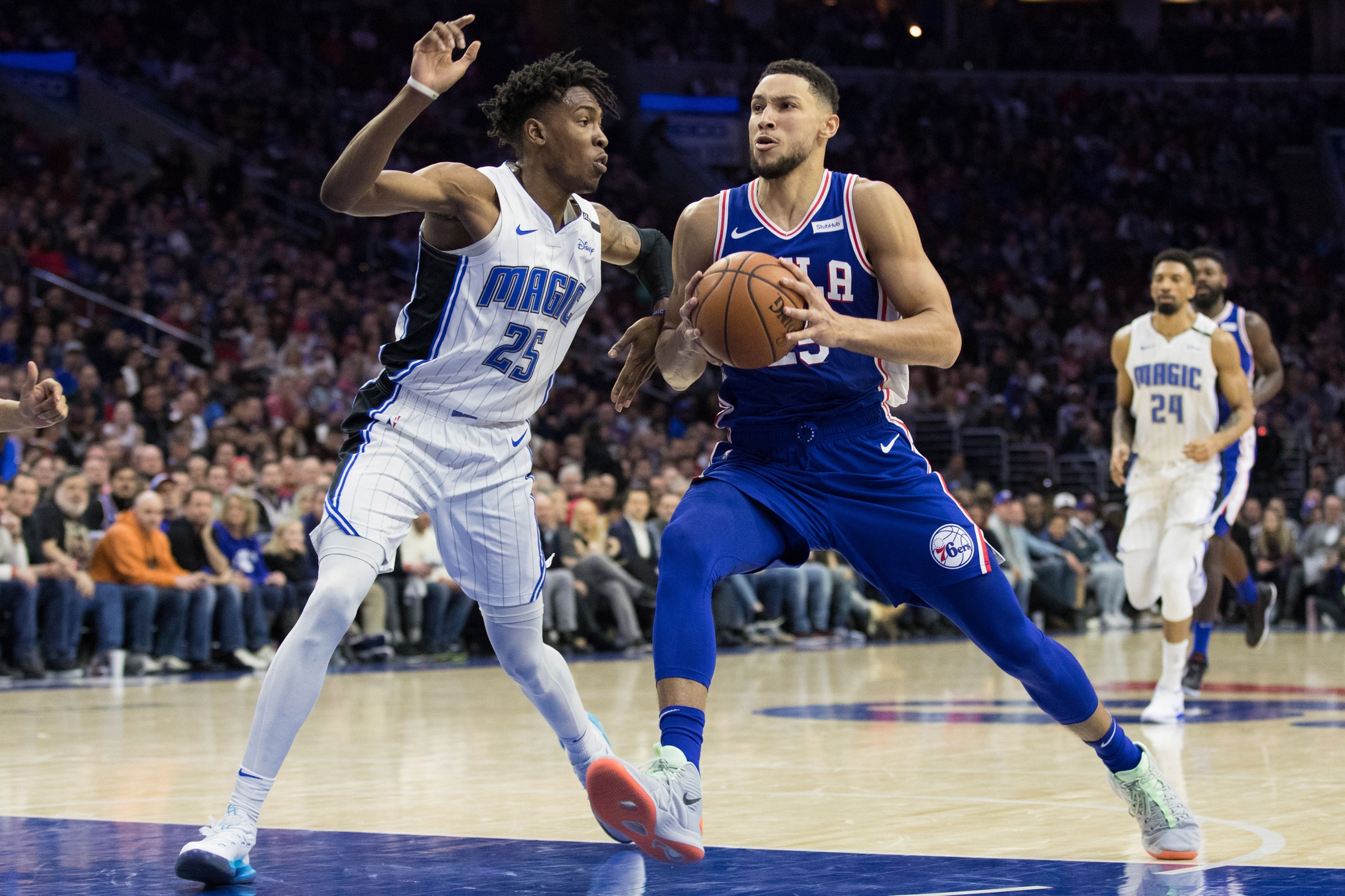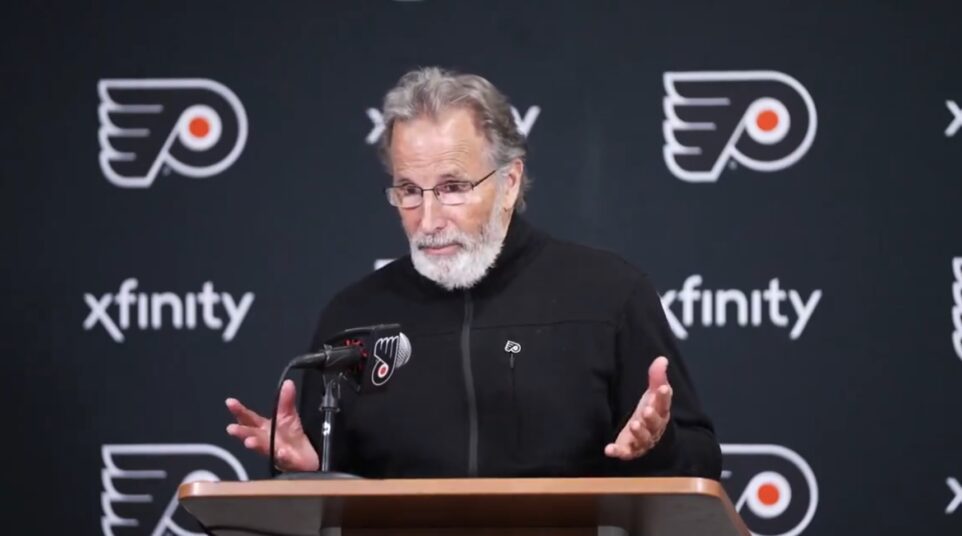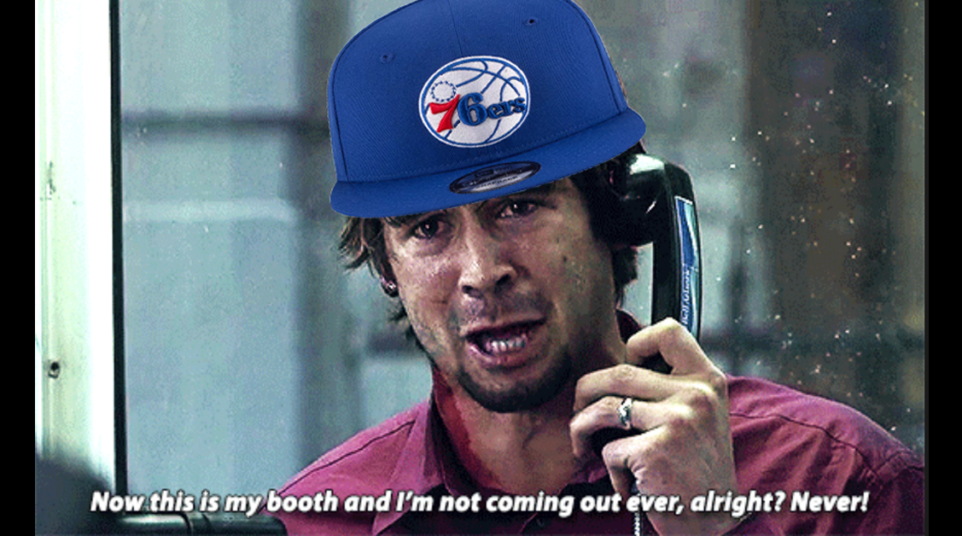
ESPN Story Sheds Light On Ben Simmons, the Jump Shot, and Accountability
Jackie MacMullan has a good story at ESPN this afternoon titled “Ben Simmons hears the talk, but his process is not a public experiment.”
It’s a solid dive into the growth of the Sixers’ star, his relationship with Brett Brown, and the quirks of the controversial rebuild, which threw him and Joel Embiid right into the “win now” fire without the grace period young NBA players typically enjoy.
This truncated passage was probably the most interesting, and it’s centered on Brown publicly calling for Ben to shoot one three pointer per game, which did not come to fruition:
Simmons agreed to work with a sports psychologist, while Sixers personnel, friends and teammates have tried — and failed — to instill the necessary impudence to get him over the hump.
“I know it’s going to come,” Simmons says. “It’s a matter of me being comfortable doing it. Some of that is getting the reps in. I can take a hook shot from the elbow, because I’ve done it so many times, I’m confident it will go in. It’s second nature.
…
(Montverde Academy coach Kevin) Boyle offered his own solution on how to coax Simmons into action: Threaten him. It’s a technique, Boyle insists, that Simmons has responded to before, especially considering his thirst for accountability.
“If I were in charge of the Sixers, I’d tell him, ‘If you don’t take a pull-up jumper and a perimeter shot in each half — I don’t care about your percentages — you’re sitting,'” Boyle says.
That is precisely the conversation Brown claims he had with Simmons and his parents last summer. This is not just another family for Brown; he coached David Simmons from 1989 to 1993 on the Melbourne Tigers, and Brown has known Ben since he was an infant. When Ben Simmons missed his entire rookie season following foot surgery, he and Brown watched film of Magic Johnson together, plotting his future as a point guard. His reticence to take 3s has heightened tensions between them, as pressure from the front office to expand his range increases.
“I told Ben, ‘If you aren’t willing to shoot, then do I just bench you? Because I can do that,'” Brown says. “We could have gone that route or continue to coach him as it relates to spacing. We worked on the ability to use it as a choice to shoot the 3, catch and go, get in the paint, or find someone else.
“This was all discussed. I opted to take this path. I think only down the road will we be able to truly assess if it was the right one. In the meantime, he’s a two-time All-Star, a kid that’s gone from a college 4 to an NBA point guard. His story is a pretty darn good one.”
People have brought this up many times before. Why not just bench a player if they don’t do what you ask them to do?
The problem is two-fold:
- Ben Simmons should still be on the court as much as possible, regardless of where his shooting is. He plays elite defense, assist teammates, and opens up the floor for other people. He is an elite creator.
- High school level tactics don’t always work on NBA players. These guys are high-profile superstars who make a ton of money. You are taking a big risk when you bench elite pro talents. It’s a delicate thing to manage the locker room ecosystem, which comes with diverse and oftentimes fragile egos.
The three-pointers Ben took and made this year looked great, and that’s the thing that’s weird to me. He looked really comfortable and confident shooting those, so I really have no idea why it continues to be a hangup for him. Ben Simmons without a jump shot is an All-Star, so Ben Simmons with a jump shot is a perennial top-ten NBA talent.
Also, accountability doesn’t always have to be external. Some of the best athletes in history have enough drive and discipline to hold themselves accountable to the point where they reach the pinnacle of their craft. Kobe Bryant, Tom Brady, Wayne Gretzky, etc – motivate yourself and don’t look elsewhere for it.
Anyway, it’s a good story, and at the risk of burying the lede, if the NBA resumes, Simmons’ back injury should not be a problem:
According to ESPN's Jackie MacMullan, Ben Simmons lower back impingement is basically gone. She's reporting a team source said if the season continues, the Sixers are expected to have him. https://t.co/kxS76HlUd4
— Dave Uram (@MrUram) April 21, 2020





